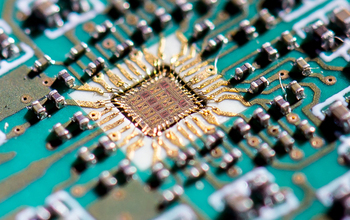Multimedia Gallery
In recent years, smartphone use and demand for wireless broadband access have intensified.
This silicon-germanium chip converts a digital trigger to a 5-picosecond pulse of radiation with a frequency spectrum exceeding 1 terahertz. The chip supports a repetition rate up to 10 gigahertz, provides beam-steering capability and contains a two-by-four array of transmitters with antennas that can each be independently programmed with resolution steps of 300 femtoseconds.
Credit: Jeff Fitlow/Rice University
Images credited to the National Science Foundation, a federal agency, are in the public domain. The images were created by employees of the United States Government as part of their official duties or prepared by contractors as "works for hire" for NSF. You may freely use NSF-credited images and, at your discretion, credit NSF with a "Courtesy: National Science Foundation" notation.
Additional information about general usage can be found in Conditions.
Also Available:
Download the high-resolution JPG version of the image. (821.7 KB)
Use your mouse to right-click (Mac users may need to Ctrl-click) the link above and choose the option that will save the file or target to your computer.
Related story: NSF awards $12 million for radio spectrum research



